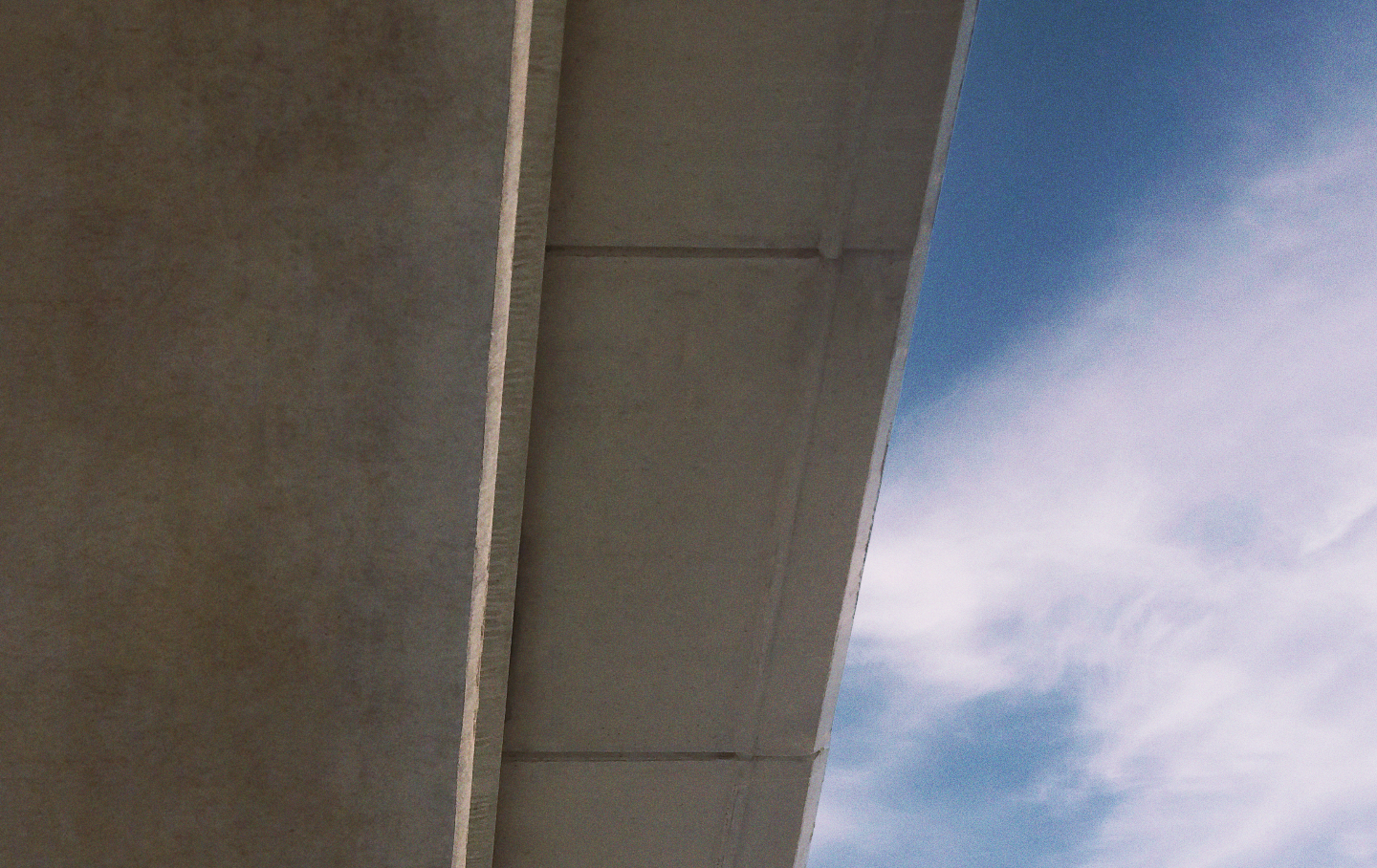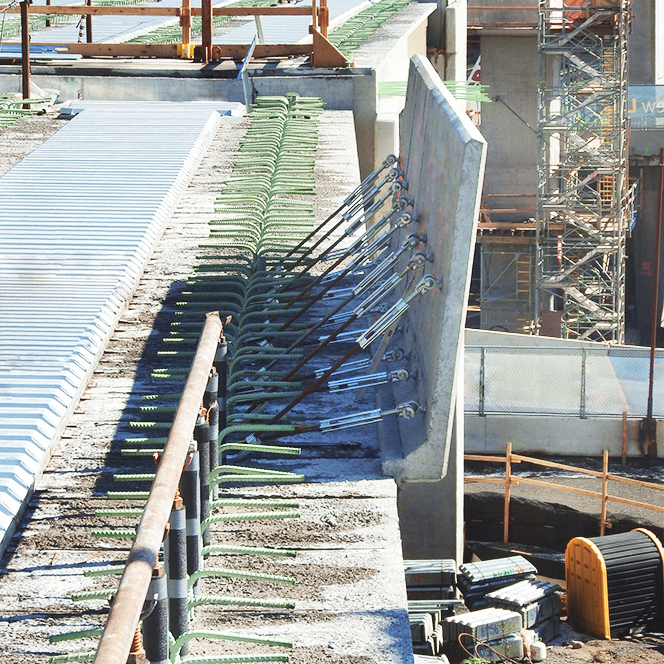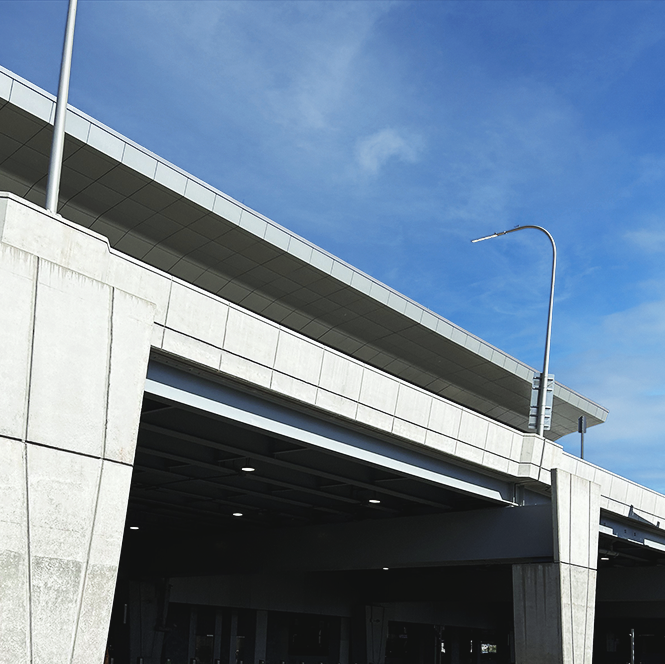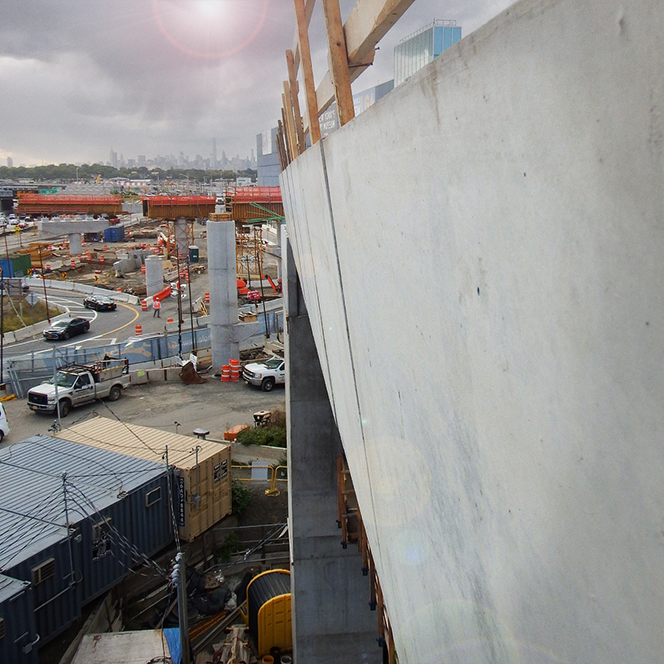
Why Your Bridge Needs
In an industry where safety and efficiency are paramount, you can't afford to live in the past and use archaic means and methods that waste time and pose unnecessary risks—unless you want to get beat by the competition.
StayPanel™ forms are a no-brainer!

Save Time and Money
StayPanel™ forms can be installed in a fraction of the time required by conventional means, all from the top side, with no need to come back.
Set 'em and forget 'em.
StayPanel™ forms are a no-brainer!
| StayPanel™ Forms | Conventional Bridge Brackets |
|---|---|
| Faster installation: one linear foot per minute on average, and you're done. | Slower installation: one linear foot can take 10x longer or more, and you still need to come back. |
| Time and money saved by reduced labor thanks to precast units and all work performed on the top side. No need to work from below—and it's much safer. | Additional off-site time and labor cost due to bracket assembly, maintenance, handling, transportation to and from site, storage, etc. |
| Minimal stripping and cleaning needed since StayPanel™ forms stay in place after installation, eliminating the need for more than 50% of formwork area. | Additional time and labor required for wood forming, oiling, stripping, and cleaning after each pour, not to mention punch list items (i.e. rub out, touch-up, etc.). |
| No disposal. | Cost of disposal: dumpster cost code gets hit hard at the end of most jobs, or handling costs hit the cost report one way or another. |
Enhance Aesthetics
The production and installation of StayPanel™ forms offer visual advantages over conventional bridge brackets.
- Consistency: Unlike conventional bridge brackets, StayPanel™ forms are made in controlled factory environments, allowing for consistent, high-quality surface finishes.
- Flexibility: The forms can be customized to create different surface textures, patterns, and architectural details, depending on your aesthetic goals.
- Precision: The precise positioning of the forms' installation helps ensure that the finished bridge is level and has the correct curvature and alignment.
- No Markings: While the removal of conventional bridge brackets can leave marks on the surface of the concrete, StayPanel™ forms—which remain in place—deliver a clean, seamless finish.

Protect People
and the Environment
Lightweight, prefabricated, and easy to install, StayPanel™ forms allow for safer construction and less environmental impact than conventional brackets while meeting OSHA requirements.
| StayPanel™ Forms | Conventional Bridge Brackets |
|---|---|
| Safer work zone under the structure thanks to topside installation and OSHA-height vertical legs of the panels that contain the deck area early on. | Installation from below and outboard deck edge, posing negative impact on the surrounding area, both on the environment and the public. |
| Less risk of falling parts: each StayPanel™ form is installed as one homogenous piece with outboard vertical legs that contain the deck area. | More risk of falling parts: bridge brackets are made of materials such as plywood sheathing, timber joists, and aluminum that can come apart and cause accidents. |
| Better alignment and structural integrity thanks to shop-controlled processes. | Risk of lengthy punch lists to correct defects in workmanship and deviations beyond construction tolerances under field controls. |
| More permeable materials providing an extended service life. | Less durable materials: cast-in-place concrete is prone to poor quality control, resulting in reduced service life. |
| More contribution to deforestation and greenhouse gas emissions due to reliance on wood materials. | More contribution to deforestation and greenhouse gas emissions due to reliance on wood materials. |

Get Lasting Results
StayPanel™ forms are designed to withstand harsh weather conditions and resist corrosion. They can last for decades without needing to be replaced, reducing maintenance costs over the lifespan of the bridge.
Secure your bridge's futureNew Means and Methods
FAQ
-
Overhangs are typically measured from the center of the fascia girder to the outboard face of the proposed barrier, while the soffit is measured from the outboard edge of the top flange of the fascia girder to the outboard face of the StayPanel™ form. For example, assume we have a 3'-0" overhang on a structure with a top flange width of 12"; the soffit width would be calculated by subtracting half the top flange (6") from the overhang and adding the thickness (3") of the StayPanel™ form [i.e., 3'-6" + 3" = 3"-9" soffit width].
-
The maximum overhang depends upon the width of the top flange; however, the maximum soffit width tested to date equates to 39" or 3'-3".
-
Preferably, the pipe rail should run along the centerline of the fascia girder to avoid deflections that could reflect into the deck pour, causing a washboard effect along the barrier line that may cause ponding and require remedial action. This is a relatively common effect encountered when using conventional means.
-
In stage construction, the workers can usually traverse the concrete paving machine from the side of the work zone with room for a walkway. In case of a ramp structure, where the paving machine reaches from barrier to barrier, a pick bracket located on the inside face of the StayPanel™ form can be utilized on each panel to support an aluminum pick to walk on.
-
Pipe rails can be pulled from work bridges or pulled after the deck is cured sufficiently to walk upon. Pipe supports are recovered once the deck is walkable by screwing them out of the concrete and pouring back with barrier concrete (if inside the proposed barrier pour) or a non-shrink grout, such as SikaGrout® 212.
Make the Most of
Slip Form Compatibility
StayPanel™ forms enhance the benefits of slip form construction—meaning more speed, safety, cost-effectiveness, and visual appeal.
